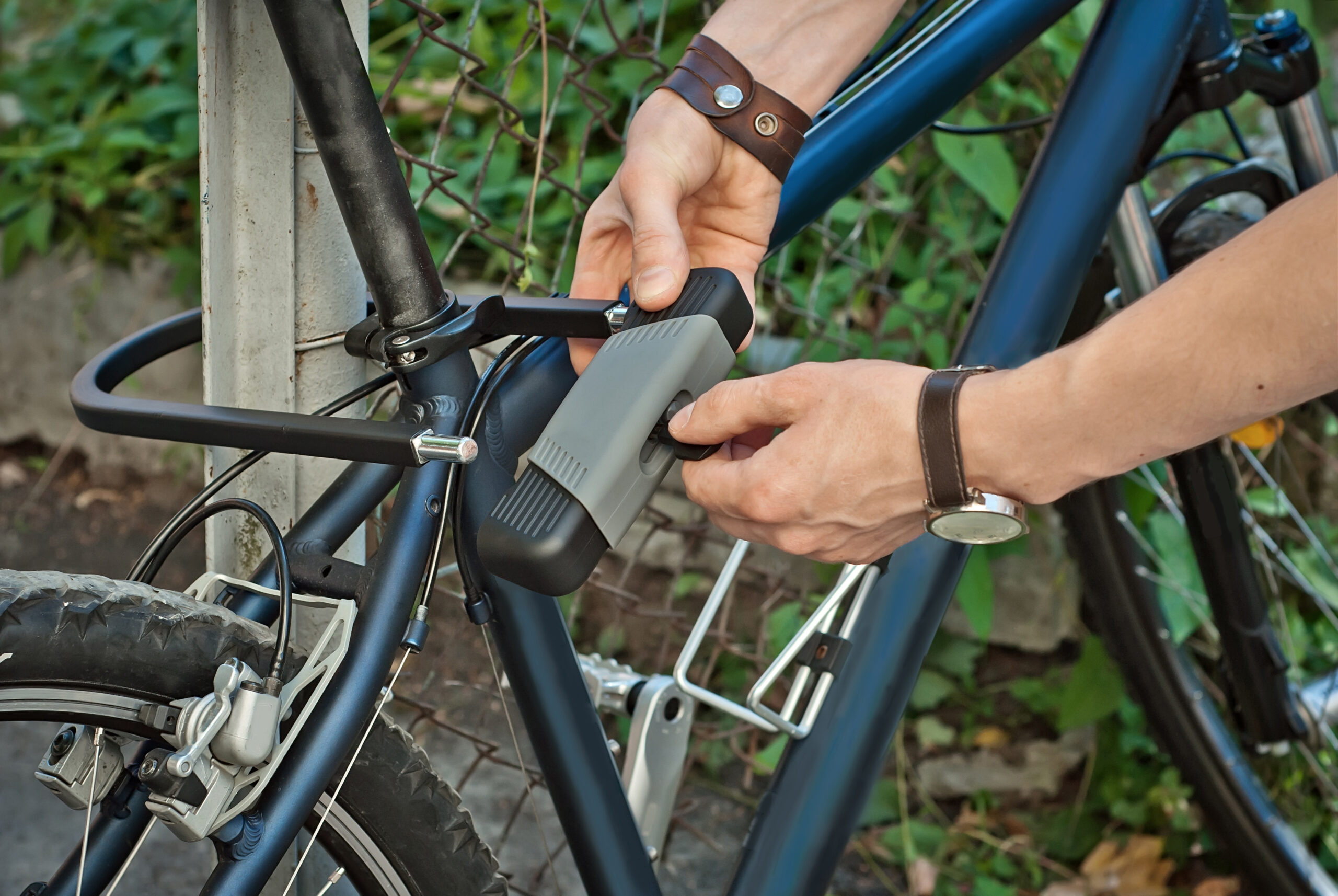Why Are So Many Bikes Stolen?
Bike theft is typically opportunistic as thieves will notice a bike that looks easy to grab, whether this means the bike has been unlocked just for a minute or it’s been secured with a weak cable. Consequently, you want to make your bike to look as difficult to steal by making it as secure as possible.
Before You Lock It Up
Before getting into the best locks, alarms and tracking systems you need to be thinking strategically about where you lock your bike up to prevent being targeted.
- Pick busy locations where footfall is high or there is good CCTV coverage – thieves will avoid these areas for fear of being caught.
- Don’t be predictable about where you leave your bike, change where you lock it up. This is particularly important if your bike is part of your daily commute. Patterns can make you an easier target.
- Make it as awkward for them as possible by positing your lock off the ground and making the mechanism hard to reach.
- Take accessories like lights, computers or panniers with you so there is nothing to tempt thieves to grab quickly.
Bicycle Locks
We all know that bicycle locks are the cornerstone of preventing bicycle theft. However, not all bike locks are created equal. To prevent theft you need to focus on the quality and technique of the lock as well as the SoldSecure rating. If you have a bicycle insurance policy with Cover4Cycles, you will be required to use a lock that meets a minimum security grade based on the value of your bike.
D-Locks (U-Locks):
D-locks are the gold standard for everyday use. They are compact, hard to cut and ideal for securing both the frame and rear wheel to a solid object.
Heavy Chains:
A heavy chain is best for at-home storage when weight does not matter. Thick, hardened links are very hard to cut through making them an excellent deterrent.
Folding Locks:
Folding locks are a practical choice for commuters who need something portable but is stronger than a cable.
Cables:
Cable locks are easy prey so you should only use them as a secondary device for accessories or extra wheels rather than as your sole lock.
Layered Defence
Delays and the possibility of drawing attention to themself is enough to put a thief off stealing your bike. Combining multiple deterrents makes your bike far less attractive.
Double Locks
Using two different style of lock together will mean a thief needs multiple tools to attempt stealing your bike.
Wheel Security
Swap quick release skewers for locking versions to prevent the theft of your bike wheels.
Bike Alarms
Audible alerts or app-connected systems make tampering noisy and risky.
GPS Trackers
Hiding a GPS tracker somewhere in or on your bike will let you trace if it is taken.
Security Marking
Registering with BikeRegister or a similar scheme will give your bike a visible and police-traceable ID.
What To Do If The Worst Happens
Acting quickly once you realise your bike has been stolen will improve the chance of its recovery.
1. Contact the Police
Report the theft of your bicycle online, via 101 or in person at a police station. If possible, provide your frame number, photos and any unique features. Ask for a crime reference number. you’ll need this when it comes to filling in a claim form with us.
2. Report it on BikeRegister
Even if haven’t registered your bike you are still able to list it as stolen. If you have listed it, update your account with the details
3. Inform Us
Notify us about the theft as soon as possible. To speed the process up make sure you have your frame number, photos and unique features to hand.
4. Inform Your Community
Inform local bike shops and share details on social media and cycling forums – word can spread fast. Shops can check second-hand bikes are legitimate with the BikeChecker tool.
5. Keep An Eye on Online Marketplaces
Monitor sites like eBay, Gumtree and Facebook Marketplace. Set alerts for your bike’s make and model. If you do see your bike listed, don’t message the seller, instead pass the details straight onto the police.
Bicycle Insurance
Even with the best precautions, determined thieves sometimes succeed. That’s why cycle insurance is worth considering. At Cover4Cycles, our policies cover theft, accidental damage, accessories and more, so you can have peace of mind that if the worst does happen you won’t be left out of pocket replacing it.
In Summary
Preventing bike theft isn’t about one lock or one habit – it’s about making your bike look like the hardest possible target. Smart storage, strong locks and layered deterrents can make the difference between keeping your bike secure and coming back to an empty rack.

